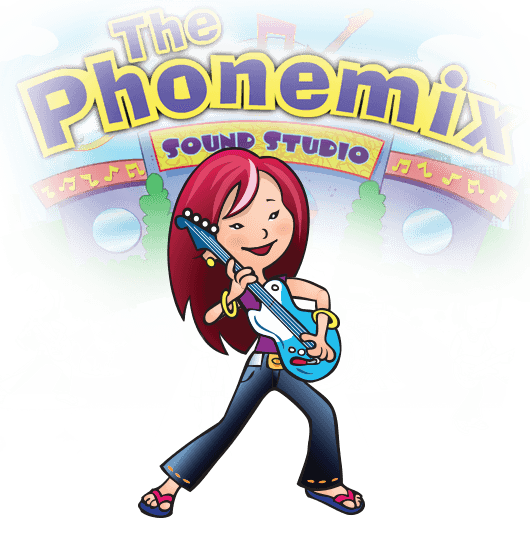Evidence and Research Based Software for Following Directions, Phonological Awareness, Auditory Memory, and Sequencing.

Following Directions
Research Basis
Verbal directions are a part of everyday life for adults and children. Appropriate behavior, social interaction, and academic success are all dependent on the ability to give and carry out verbal directions. Basic concepts are words that individuals need to comprehend to perform everyday tasks such as following directions, participating in classroom routines, and engaging in conversation. Basic concepts are typically the foundation of verbal directions and may include but are not limited to basic colors (e.g., red, blue, green), directions (e.g., through, around), quantities (e.g., few, many), sequences (e.g., first, next, last), shapes (e.g., round, square), size (e.g., big, little), social/emotional states (e.g., happy, sad), characteristics (e.g., old, new), textures (e.g., rough, smooth), time (e.g., early, late), and spatial relationships and positions (e.g., front, behind, top, bottom) (Hadley et al., 2018; Nicholas et. al, 2019). Auditory comprehension, the ability to understand more complex verbal messages, includes tasks such as following multi-level directions (Bellis, 2003; Johnson et al., 1997; Roeser & Downs, 2004; Stredler-Brown & Johnson, 2004), which is essential for a child to follow classroom instructions and benefit from the teacher’s lessons.
Evidence Basis
Fifty-four PreK to fifth-grade general and special education students in Clark County Schools in Las Vegas, Nevada, used the HearBuilder Following Directions software two to three times per week for a minimum of eight weeks. Students were pre- and posttested with the Webber HearBuilder Following Directions Computerized Screener. Participating students demonstrated a statistically significant improvement (p<.001) in scores with a pretest average of 24.74 to a posttest average of 34.54. These results indicate HearBuilder Following Directions is an effective instructional component for improving specific auditory processing skills of students in general and special education programs.
Phonological Awareness
Research Basis
Phonological awareness, or auditory analysis, is the ability to hear and judge the structure of spoken language (Roeser & Downs, 2004; Torgesen, 2002; Torgesen et al., 1994). It includes the ability to identify, blend, segment, and manipulate sounds (Catts, 1991; Schuele & Boudreau, 2008; Sterling-Orth, 2004). Spoken language can be divided into words, words can be divided into syllables, syllables can be divided into sounds, and sounds can be rearranged and substituted to make new words (Catts, 1991; Roeser & Downs, 2004; Schuele & Boudreau, 2008; Sterling-Orth, 2004; Torgesen, 2002). Although some children may develop shallow levels of phonological awareness without direct instruction, research shows that children with auditory processing difficulties, language difficulties, learning difficulties, and/or low literacy achievement demonstrate lower performance in phonological awareness tasks (Brosseau-Lapré F. et al., 2020; Catts et al., 2002; Rinaldi et al., 2021; Sharma et al., 2009; Schuele & Boudreau, 2008; Torgesen et al., 1994). Poor phonological awareness is indicative of early reading difficulties (Catts, 1991; Schuele & Boudreau, 2008; Torgesen, 2009; Torgesen et al., 1994), and there is agreement among researchers that phonological awareness, letter identification, and oral language ability are strong indicators of future reading ability (Catts et al., 2002; Scarborough, 1998; Torgesen et al., 1994).
Evidence Basis
In Clark County School District in Nevada, 68 general and special education PreK to fifth-grade students who were deemed at-risk for reading disabilities used the HearBuilder Phonological Awareness software two to three times per week for at least eight weeks. They were pre- and posttested with section 1 of the Emerging Literacy & Language Assessment® (ELLA®). The students showed statistically significant improvement (p<.001) from pretest to posttest with a pretest mean of 52.97 and a posttest mean of 83.04. These results indicate that HearBuilder Phonological Awareness is an effective instructional component for improving the phonemic and phonological awareness skills of students in general and special education programs.


Auditory Memory
Research Basis
Auditory memory is the ability to take in information that is presented orally, process it, retain it in one’s mind, and then recall it (Bellis, 2003; Roeser & Downs, 2004; Stredler-Brown & Johnson, 2004). Auditory memory requires working memory and also involves the skills of attending, listening, processing, storing, and recalling (Cusimano, 2011). There is a strong relationship between working memory and overall learning rate; greater memory span relates to faster learning (Radvansky & Copeland, 2006; Dehn, 2008); therefore, memory and achievement are highly correlated (Swanson, 1996). Working memory has significant relationships with reading decoding, language comprehension, spelling, following directions, vocabulary development, note taking, reasoning, complex learning, and grade point average (Archibald, 2016; Engle, 1996; Engle et al., 1999; Jackson et al., 2021; Kamhi, 2014). In the classroom, memory is heavily taxed by everyday activities such as remembering multi-step directions, relating new information to prior knowledge, oral language comprehension, taking notes while listening, verbal fluid reasoning, written expression, and oral expression, and even for a student with normal working memory function, these activities can overwhelm memory operation. Since working memory is affects nearly every aspect of academic learning, interventions are very appropriate in an educational environment (Dehn, 2008). The teaching of rehearsal strategies, mnemonics, and other working memory strategies can improve the efficiency of working memory, and therefore augment academic learning and performance (Torgesen & Goldman, 1977).
Evidence Basis
Ninety kindergarten to eighth-grade students in a southern suburban school district used the HearBuilder Auditory Memory software two to three times per week for a minimum of eight weeks. They were pre- and posttested with five subtests (Number Memory Forward, Number Memory Reversed, Word Memory, Sentence Memory, Auditory Comprehension) of the Test of Auditory Processing Skills-3 (TAPS-3). The students showed statistically significant improvement (p<.001) with a pretest mean of 62.43 and posttest mean of 75.22. Students were also pre- and posttested with the online HearBuilder Auditory Memory Inventory (an 82-item screener in which students recall numbers, recall words, complete sentences with one missing word, recall details, and answer questions about 2 to 3 orally-presented sentences). The group showed statistically significant improvement (p<.001) with a pretest mean of 35.59 and a posttest mean of 41.32. These results suggest that the use of HearBuilder Auditory Memory had an overall significant effect on students’ auditory memory skills.
Forty-eight kindergarten to eighth-grade students in another southern suburban school district used the HearBuilder Auditory Memory software two to three times per week for a minimum of eight weeks. Statistically significant results were obtained when students were pre- and posttested with the online HearBuilder Auditory Memory Inventory (pretest mean 33.67, posttest mean 38.73, p=.007). Results of the study with this group of students also indicated improvement in auditory memory skills after using HearBuilder Auditory Memory.
Sequencing
Research Basis
Sequencing refers to students’ abilities to put events in a chronological or causal order. These events may be familiar (e.g., making the bed, washing hands) or unfamiliar (e.g., crossing a drawbridge, snowboarding), depending on students’ prior knowledge. Sequencing is necessary for understanding and telling narratives, problem solving, reading comprehension, performing daily routines, interacting appropriately with peers and adults, and achieving academic success.
In order to sequence events correctly, a student has to understand cause and effect, make predictions, use and understand time and transition words (e.g., first, next, last), and have knowledge of the critical elements in a story (e.g., setting, character, beginning, middle, end, etc.) (Kim et al., 2018). A student also needs adequate reasoning and planning skills. Students with specific language impairments, learning disabilities, autism, and other neurological deficits may have difficulty sequencing events and consequently retelling the events of a narrative (Candler & Hildreth, 1990; Dempsey, 2021; Jarvella & Lubinsky, 1975; Montgomery, 2002; Mesibov, 2004; Miles & Chapman, 2002; “Executive Function,” 2009; Singer & Bashir, 1999; Tinaz et al., 2005; Wright & Newhoff, 2001). In order to sequence, students must be able to plan and prioritize, organize, shift attention, and remember the details of the pictures seen or the information read or heard. Sequencing activities benefit students by helping them remember a process, learn the names of the steps in a process, know the tools used to complete the process, and understand and use the specific vocabulary associated with a process (Marr & Morgan, 2005).
Evidence Basis
Twenty-nine kindergarten to fifth-grade students in a southern suburban school district used the HearBuilder Sequencing software two to three times per week for a minimum of eight weeks. They were pre- and posttested with the Story Retell subtest of the Emerging Literacy & Language Assessment (ELLA). The students showed statistically significant improvement (p<.001) from pretest to posttest with a pretest mean of 4.08 and a posttest mean of 6.20. Students were also pre- and posttested with the online HearBuilder Sequencing Inventory (a 10-item sequencing screener in which students sequenced three-, four-, and five-step picture sequences). The group earned a pretest mean of 4.3 and a posttest mean of 6.17 showing statistically significant improvement (p=.005). Results on these two measures indicate students improved their narrative retell and sequencing skills after using the HearBuilder Sequencing software as part of their language arts program.
Twenty-four kindergarten to fifth-grade students in another southern suburban school district used the HearBuilder Sequencing software two to three times per week for a minimum of eight weeks. Statistically significant results were obtained when students were pre- and posttested using the Story Retell subtest of the ELLA (pretest mean 3.08, posttest mean 5.71, p<.001) and the online HearBuilder Sequencing Inventory (pretest mean 3.17, posttest mean 5.50, p<.001). The results of the study with this group of students also indicated improvement in sequencing and story retell skills after using HearBuilder Sequencing as part of the district language arts program.


